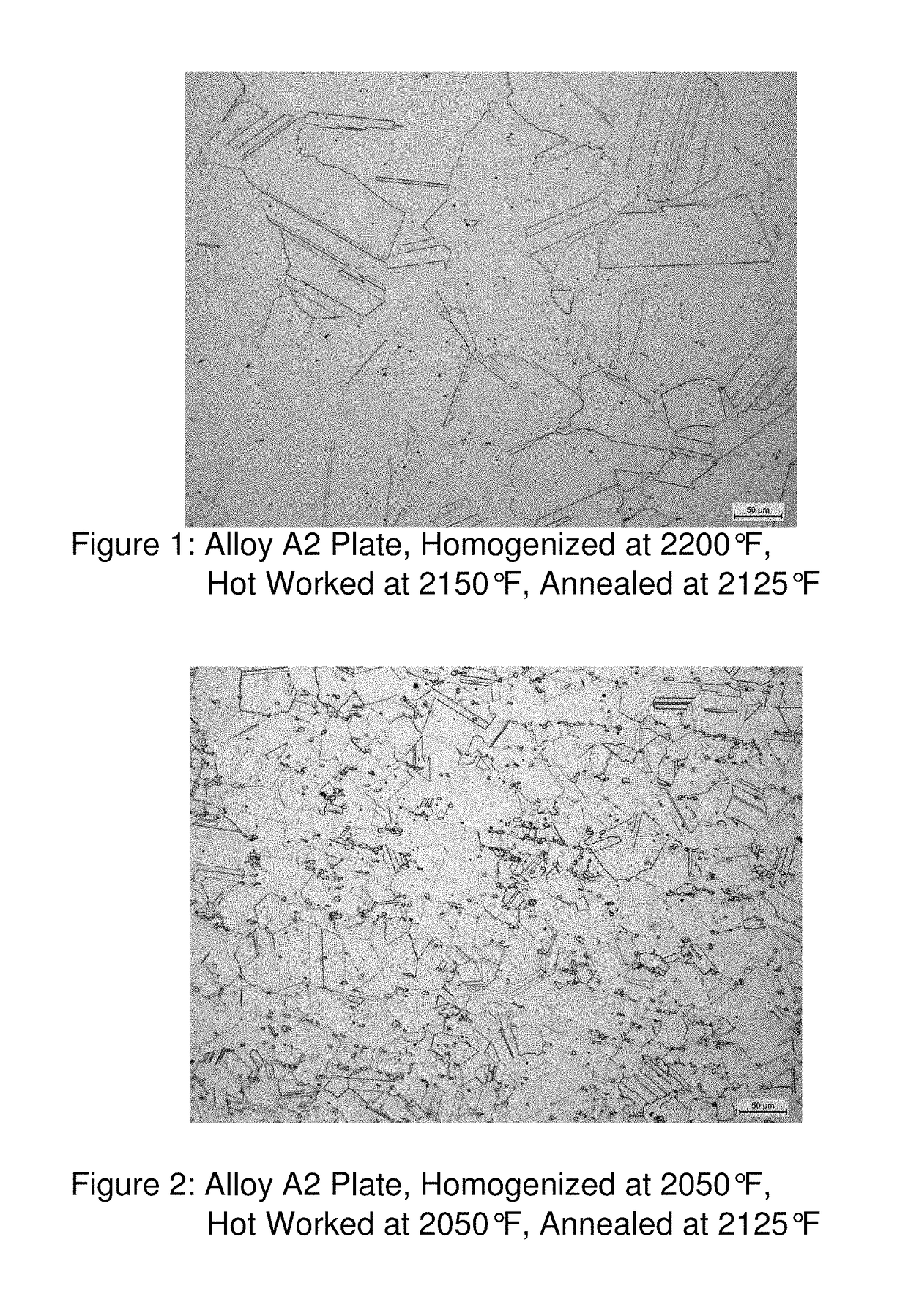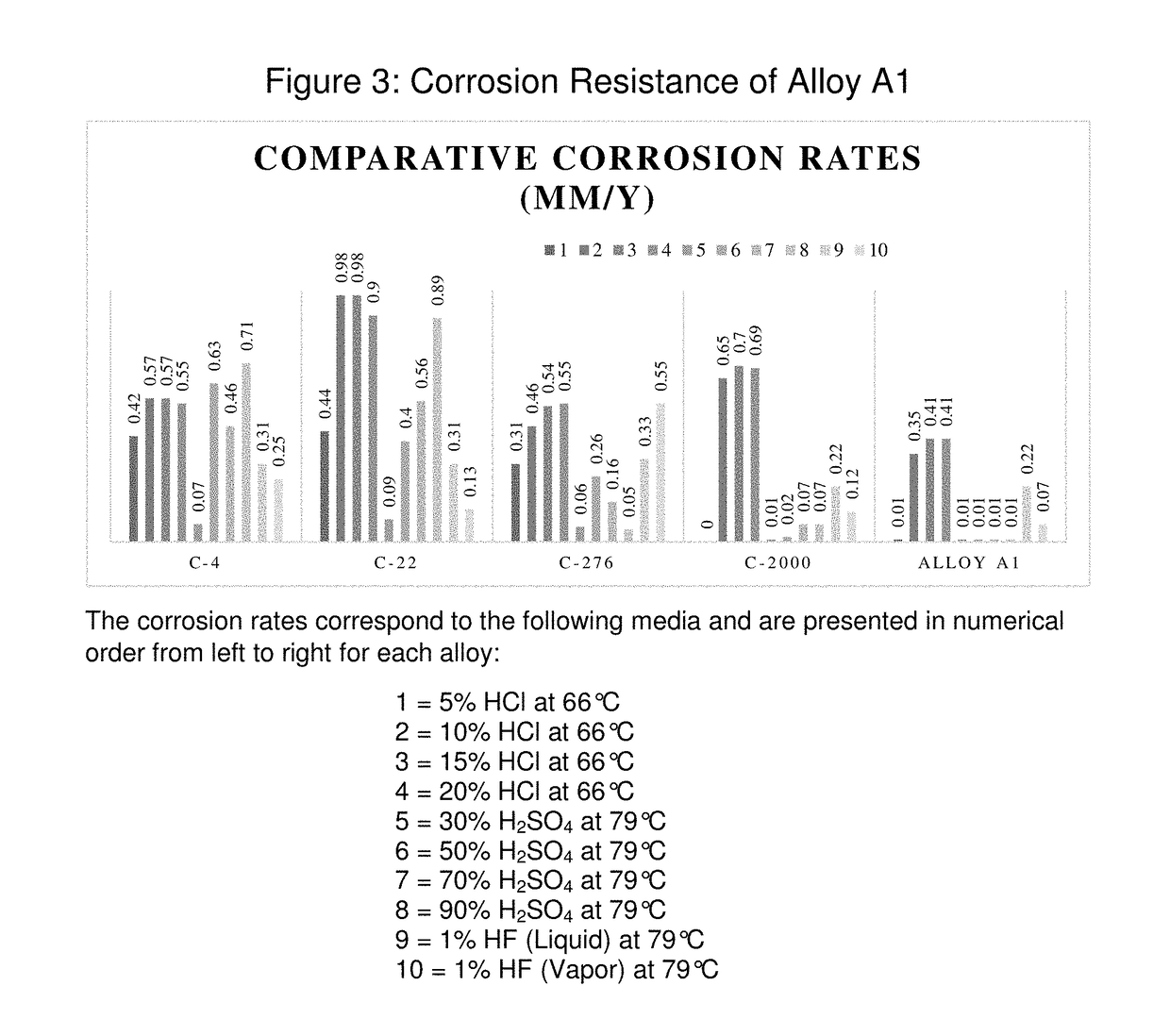Method for producing two-phase Ni—Cr—Mo alloys
a technology of nickelchromium molybdenum and nickelchromium molybdenum, which is applied in the direction of metal rolling arrangements, metal-working apparatuses, etc., can solve the problems of second phase precipitation in grain boundaries, and achieve the effect of reducing the tendency for side-bursting and improving the resistance to grain boundary precipitation
- Summary
- Abstract
- Description
- Claims
- Application Information
AI Technical Summary
Benefits of technology
Problems solved by technology
Method used
Image
Examples
Embodiment Construction
[0018]We provide a means by which homogeneous, wrought, two-phase microstructures can be reliably generated in highly alloyed Ni—Cr—Mo alloys. Such a structure requires: 1. an ingot homogenization at 2025° F. to 2100° F. (preferably 2050° F.), and 2. hot forging and / or hot rolling at a start temperature of 2025° F. to 2100° F. (preferably 2050° F.). Moreover, we have discovered a range of compositions that, when processed under these conditions, exhibit superior corrosion resistance, relative to existing, wrought Ni—Cr—Mo alloys.
[0019]These discoveries stemmed from laboratory experiments with a material of nominal composition: balance nickel, 20 wt. % chromium, 20 wt. % molybdenum, 0.3 wt. % aluminum, and 0.2 wt. % manganese. Two batches (Alloy A1 and Alloy A2) of this material were vacuum induction melted (VIM), and electro-slag re-melted (ESR), under identical conditions, to yield ingots of diameter 4 in and length 7 in, weighing approximately 25 lb. One ingot was produced from Al...
PUM
| Property | Measurement | Unit |
|---|---|---|
| start temperature | aaaaa | aaaaa |
| start temperature | aaaaa | aaaaa |
| temperature | aaaaa | aaaaa |
Abstract
Description
Claims
Application Information
 Login to View More
Login to View More - R&D Engineer
- R&D Manager
- IP Professional
- Industry Leading Data Capabilities
- Powerful AI technology
- Patent DNA Extraction
Browse by: Latest US Patents, China's latest patents, Technical Efficacy Thesaurus, Application Domain, Technology Topic, Popular Technical Reports.
© 2024 PatSnap. All rights reserved.Legal|Privacy policy|Modern Slavery Act Transparency Statement|Sitemap|About US| Contact US: help@patsnap.com










